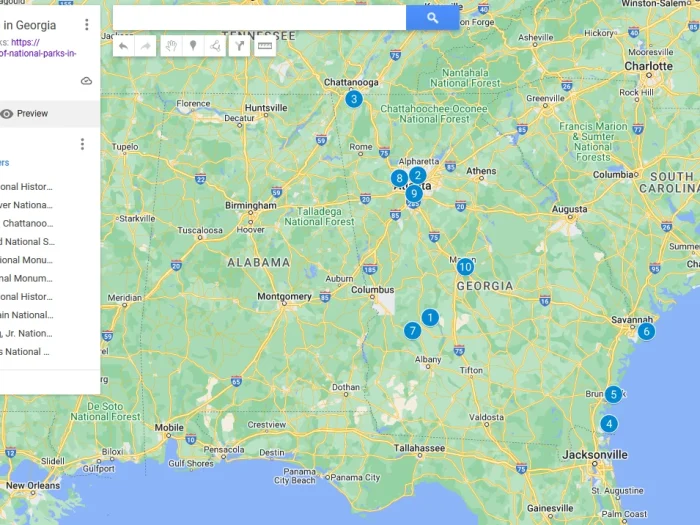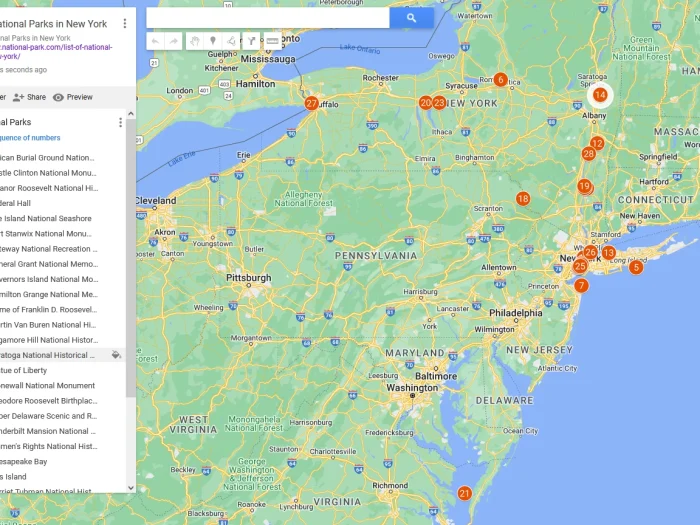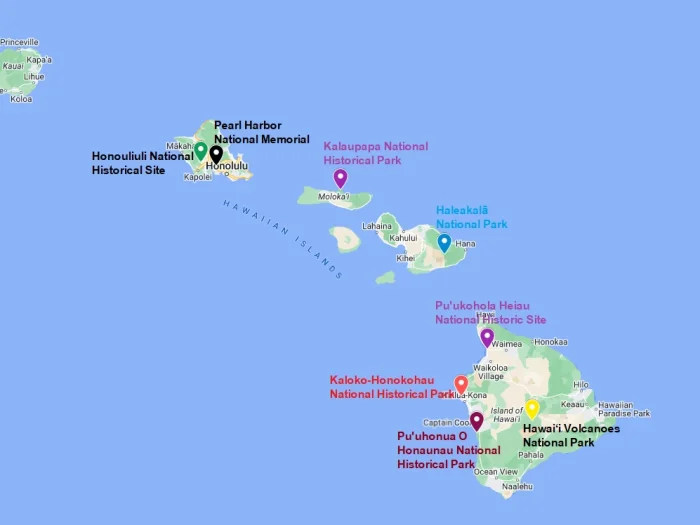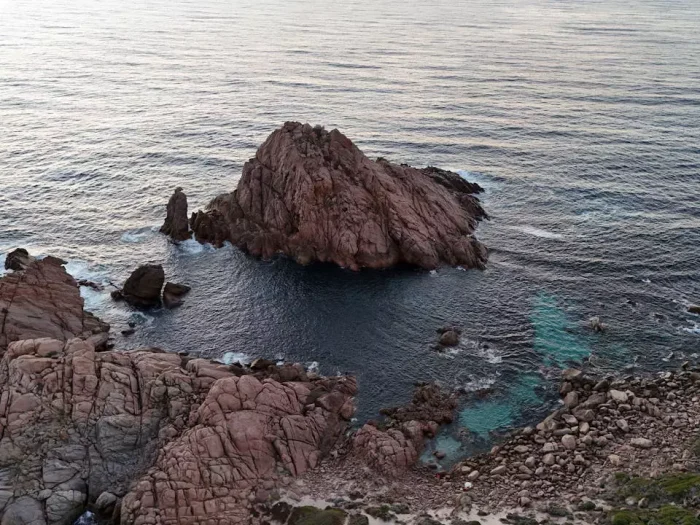Rapid ʻŌhiʻa Death
What is Rapid Ohia Death?
Rapid ʻŌhiʻa Death (ROD) is a fungal disease affecting native ʻōhiʻa trees in Hawaii. Here are some key things to know about it.
Rapid ʻŌhiʻa Death
- The disease is caused by two fungal pathogens – Ceratocystis huliohia and Ceratocystis lukuohia. These fungi block the vascular system of the trees, preventing water transport.
- It was first detected in 2014 on Hawaii Island and has since spread rapidly across the entire state. The fungi can be dispersed long distances by wind, water and infected plant material.
- ‘Ōhi’a trees are very important to Hawaii’s native forests and ecosystems. They provide habitat for endangered plants and animals and help prevent soil erosion.
- Symptoms of ROD include wilted or discolored foliage, branch dieback and death of the entire tree within months or even weeks after infection.
- There is no known treatment or cure once a tree is infected. Infected trees and debris must be removed to contain the spread.
- The fungi have killed hundreds of thousands of ʻōhiʻa trees across Hawaii so far. ROD poses a major threat to native biodiversity and entire ecosystems dependent on ʻōhiʻa.
- Conservation efforts focus on early detection, tracking the disease’s spread, public education and managing remaining healthy ʻōhiʻa forests. It remains an ongoing ecological crisis in Hawaii with no solution currently available.
Map of Rapid Ohia Death
(Source: University of Hawai’i Rapid Ohia Death website, https://cms.ctahr.hawaii.edu/rod/)
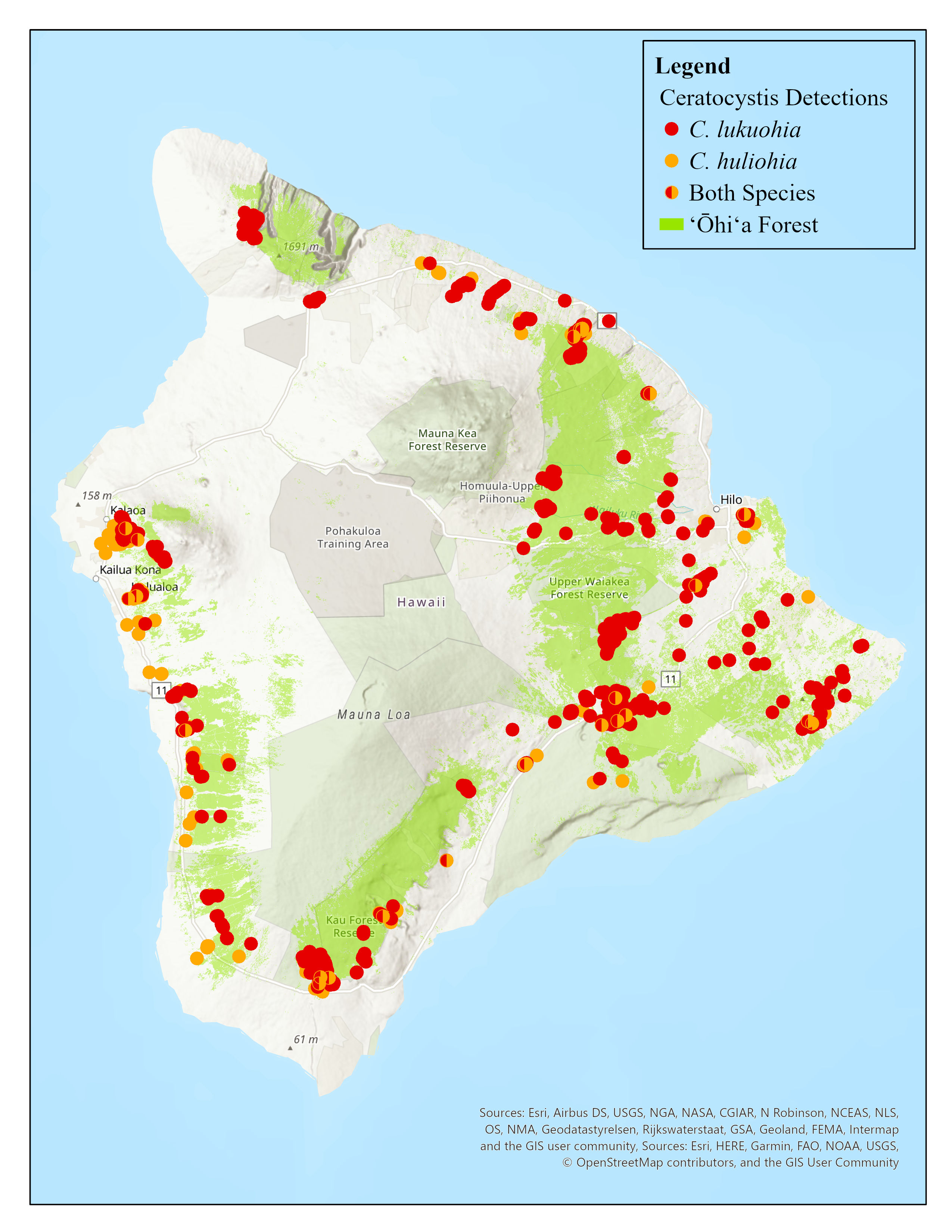
How to prevent rapid ʻōhiʻa death?
Here are 5 things the public can do to help prevent the spread of Rapid ʻŌhiʻa Death:
- Be on the lookout and report any suspicious trees. If you see an ʻōhiʻa tree showing symptoms like wilting, discolored leaves or dead branches, take a photo and contact your local invasive species committee. Samples need to be collected and tested to confirm ROD.
- Don’t transport ʻōhiʻa between islands. Moving live plants, cuttings or wood from infected areas is how the disease can spread. Follow all regulations regarding interisland transport of ʻōhiʻa.
- Avoid injuring or cutting ʻōhiʻa trees. Wounds in the bark allow entry for the fungi and increase the risk of infection.
- Clean your gear thoroughly. Spores can hitchhike on shoes, clothes and equipment so clean thoroughly before entering uninfected forests.
- Wash vehicles thoroughly. Invasive pathogens frequently spread via transportation, so wash vehicles thoroughly, especially tires and undercarriage, after traveling off-road to remove any clinging dirt. Take extra care when shipping vehicles between islands.
If you want to visit Hakalau Forest National Wildlife Refuge, please contact them before you go.
The key message is for the public to be vigilant, avoid spreading infected materials or introducing risks for new infections, and report any potential sightings to help monitor and contain the disease.
Tag: Rapid Ohia Death, Rapid Ohia Death fungus, Rapid Ohia Death symptoms


